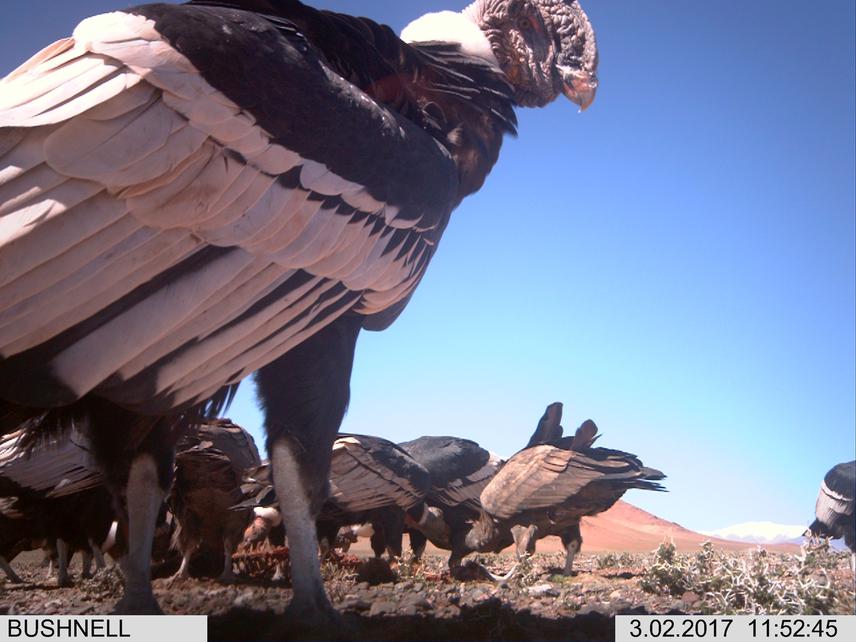Paula Leticia Perrig
Other projects
25 Nov 2016
Multitrophic Links in the High Andes: Importance of the Puma-Vicuña Interaction for the Conservation of Andean Condors
Vultures provide key contributions to humans because they efficiently consume carcasses, thus controlling the spread of diseases and the abundance of nuisance species that scavenge opportunistically. Yet, 73% of vultures are threatened with extinction. These birds now face an emergent risk: diseases that impact wild ungulates and predators that provide key carrion resources.
In a remote landscape of the Andes (San Guillermo National Park [SGNP], Argentina), condors (Vultur gryphus) fed on wild camelids (Vicugna vicugna, Lama guanicoe) provisioned by pumas (Puma concolor). Yet, an outbreak of sarcoptic mange (Sarcoptes scabiei) nearly drove camelids to extinction, forcing condors to leave the area and expose themselves to anthropogenic threats in agricultural landscape and urban landfills. With this project, I aim to investigate the foraging habits of Andean condors and their reliance on puma subsidies 9 years after the mange outbreak started.

Condors foraging on a native camelid in San Guillermo National Park before the mange outbreak, which nearly drove camelids to extinction. @Paula Perrig.
With that goal, I will:
- Provide a quantitative comparison of the foraging habits and trophic dependencies of Andean condors before and after the mange outbreak.
- Raise awareness among wildlife managers and local communities about the importance of protecting native prey and predators for condor conservation and the risk faced by condors due to mange and other infectious diseases.
The information collected will allow me to (1) Develop management recommendations for the recovery of carrion availability from puma-killed camelids in my study area, (2) Contribute to the development of prevention and monitoring programs of infectious diseases in protected areas of Argentina where condors are present, and (3) Raise awareness on the importance of disease outbreaks for the conservation of vultures.
Header: Andean condor flying in San Guillermo National Park @Joe Riis.